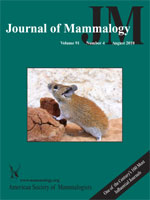Shrew abundance has been linked to the presence of coarse woody debris (CWD), especially downed logs, in many regions in the United States. We investigated the importance of CWD to shrew communities in managed upland pine stands in the southeastern United States Coastal Plain. Using a randomized complete block design, 1 of the following treatments was assigned to twelve 9.3-ha plots: removal (n = 3; all downed CWD ≥10 cm in diameter and ≥60 cm long removed), downed (n = 3; 5-fold increase in volume of downed CWD), snag (n = 3; 10-fold increase in volume of standing dead CWD), and control (n = 3; unmanipulated). Shrews (Blarina carolinensis, Sorex longirostris, and Cryptotis parva) were captured over 7 seasons from January 2007 to August 2008 using drift-fence pitfall trapping arrays within treatment plots. Topographic variables were measured and included as treatment covariates. More captures of B. carolinensis were made in the downed treatment compared to removal, and captures of S. longirostris were greater in downed and snag compared to removal. Captures of C. parva did not differ among treatments. Captures of S. longirostris were positively correlated with slope. Our results suggest that abundance of 2 of the 3 common shrew species of the southeastern Coastal Plain examined in our study is influenced by the presence of CWD.
How to translate text using browser tools
16 August 2010
Influence of coarse woody debris on the soricid community in southeastern Coastal Plain pine stands
Justin C. Davis,
Steven B. Castleberry,
John C. Kilgo
ACCESS THE FULL ARTICLE

Journal of Mammalogy
Vol. 91 • No. 4
August 2010
Vol. 91 • No. 4
August 2010
Blarina
coarse woody debris
Cryptotis
decay state
shrew
Sorex
topographic variables




